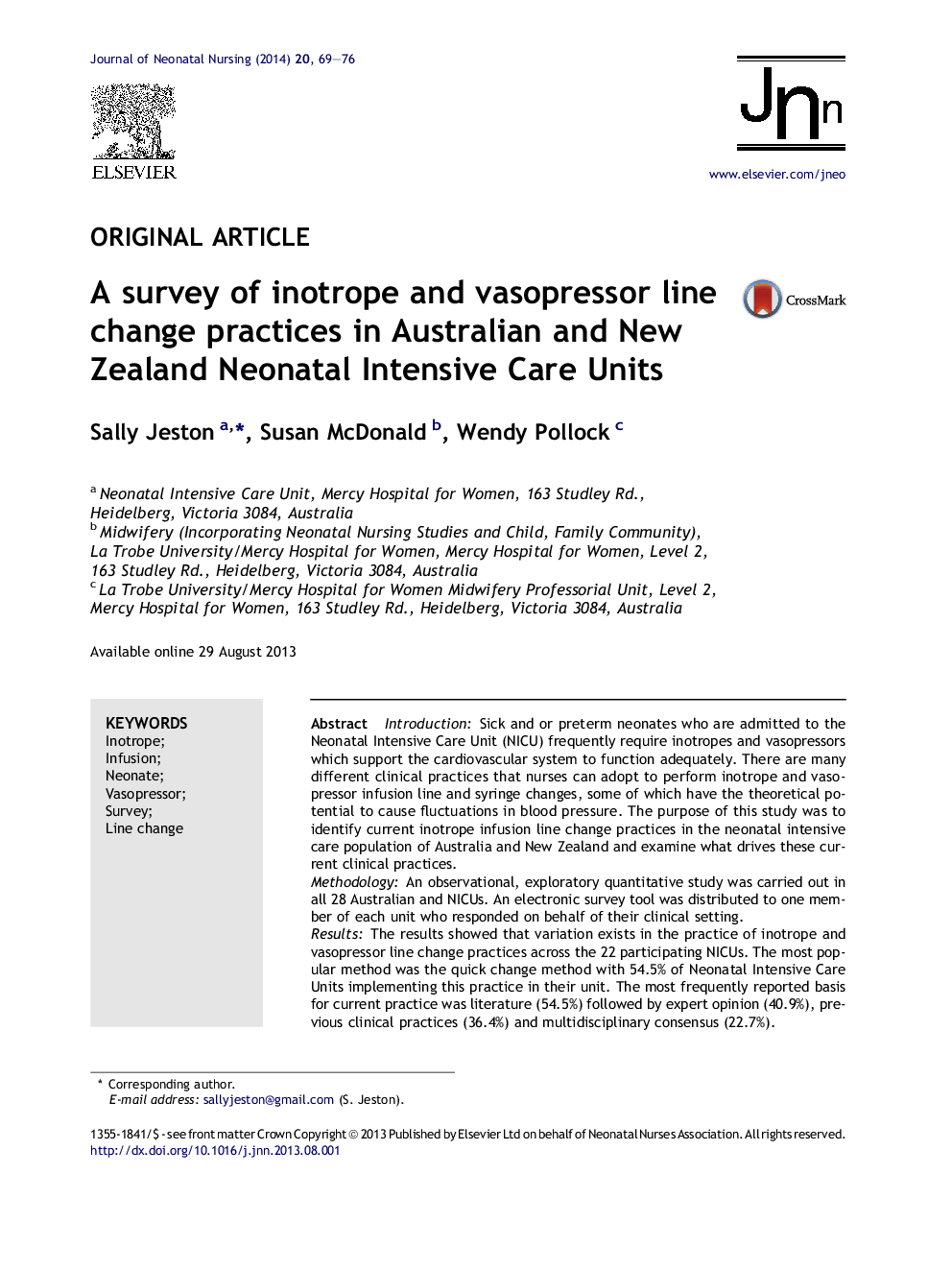| Article ID | Journal | Published Year | Pages | File Type |
|---|---|---|---|---|
| 2631464 | Journal of Neonatal Nursing | 2014 | 8 Pages |
IntroductionSick and or preterm neonates who are admitted to the Neonatal Intensive Care Unit (NICU) frequently require inotropes and vasopressors which support the cardiovascular system to function adequately. There are many different clinical practices that nurses can adopt to perform inotrope and vasopressor infusion line and syringe changes, some of which have the theoretical potential to cause fluctuations in blood pressure. The purpose of this study was to identify current inotrope infusion line change practices in the neonatal intensive care population of Australia and New Zealand and examine what drives these current clinical practices.MethodologyAn observational, exploratory quantitative study was carried out in all 28 Australian and NICUs. An electronic survey tool was distributed to one member of each unit who responded on behalf of their clinical setting.ResultsThe results showed that variation exists in the practice of inotrope and vasopressor line change practices across the 22 participating NICUs. The most popular method was the quick change method with 54.5% of Neonatal Intensive Care Units implementing this practice in their unit. The most frequently reported basis for current practice was literature (54.5%) followed by expert opinion (40.9%), previous clinical practices (36.4%) and multidisciplinary consensus (22.7%).ConclusionThis study has identified areas requiring further research in order for a standard, safe and efficient practice to be implemented in the Neonatal Intensive Care Unit for these critically sick neonates.
